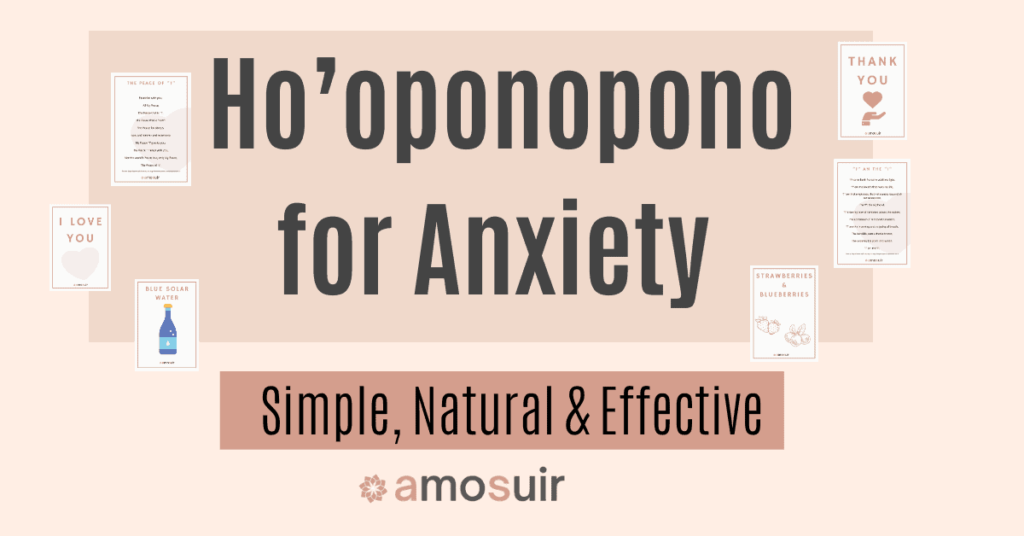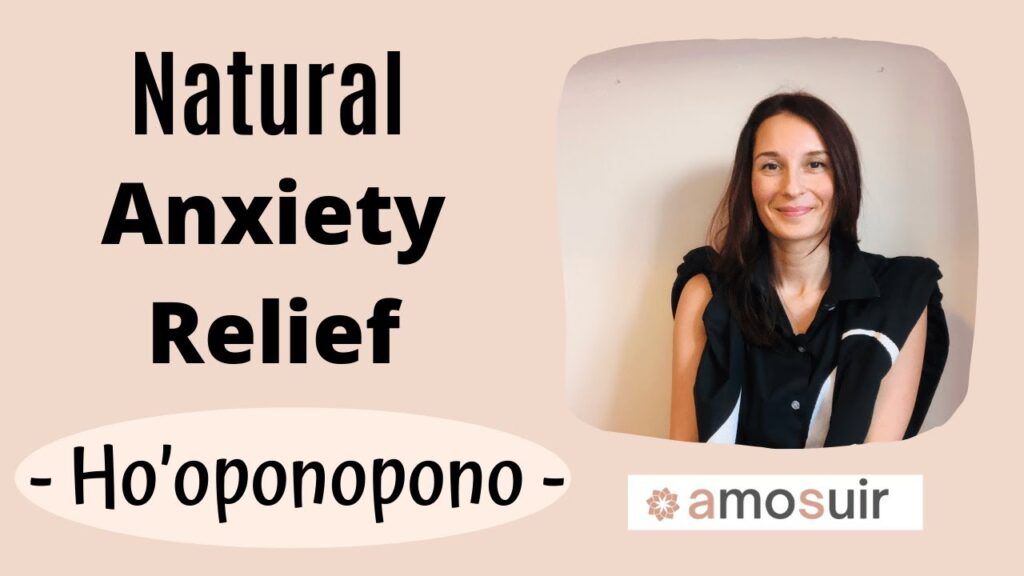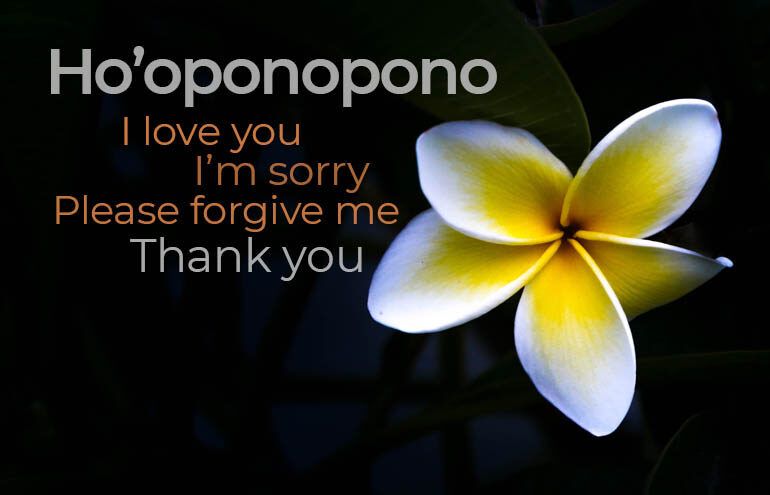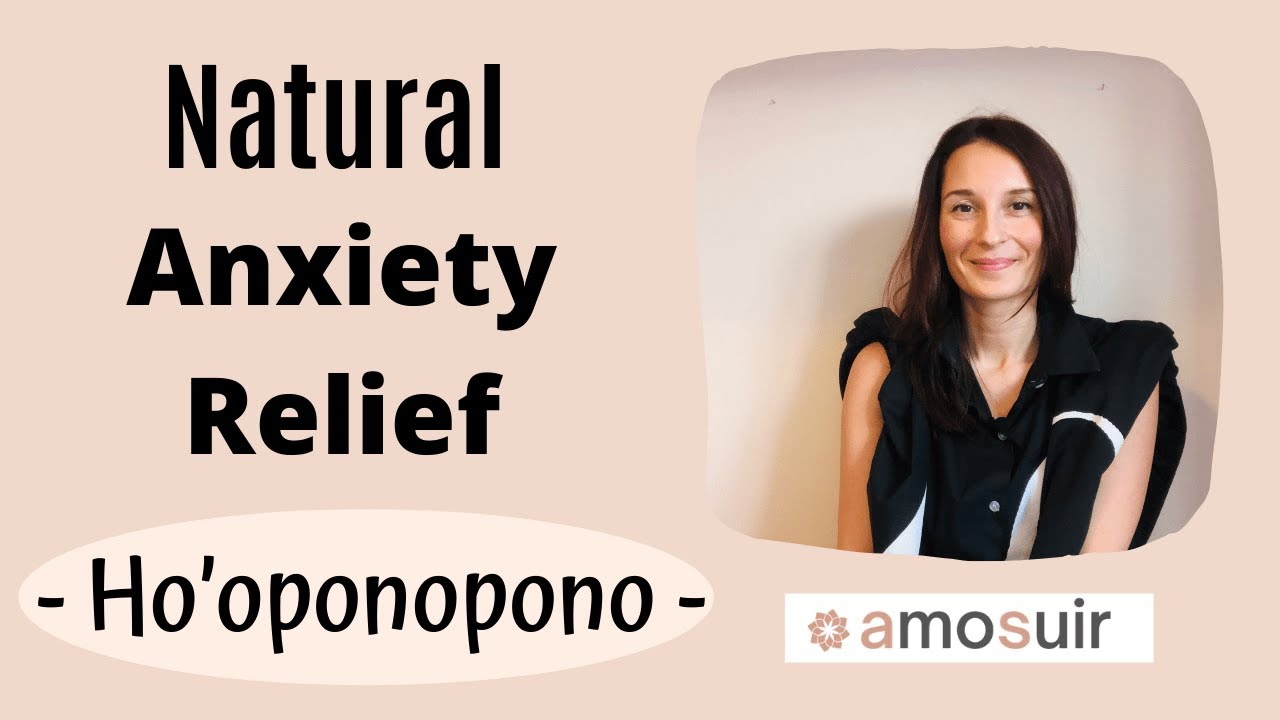So, you’ve been feeling anxious lately, huh? Well, you’re not alone. Many people experience anxiety at some point in their lives. But have you ever heard of Ho’oponopono? It’s a Hawaiian practice that some people believe can help with anxiety. Intrigued? Well, in this article, we’ll explore what Ho’oponopono is, how it works, and whether or not it can actually be beneficial for managing anxiety. So, if you’re ready to learn more, keep reading!
Curious to know if practicing Ho’oponopono can really make a difference in your anxiety levels? Well, you’re in luck because we’re about to dive into all the details. In this article, we’ll delve into the ancient Hawaiian tradition of Ho’oponopono and how it is said to help with anxiety. We’ll explore the principles and techniques of this practice, and even share some personal stories of those who have found relief through Ho’oponopono. So, if you’re tired of feeling overwhelmed by anxiety and want to explore a different approach, stay tuned to discover if Ho’oponopono might be the answer you’ve been searching for.

Understanding Ho’oponopono
Origins and Meaning of Ho’oponopono
Ho’oponopono is a traditional Hawaiian practice that aims to restore harmony and balance in relationships, both with others and ourselves. The word “Ho’oponopono” can be broken down into two parts: “ho’o,” which means to make, and “ponopono,” which means right. Therefore, the term can be translated to “making things right” or “correcting errors.”
Historically, Ho’oponopono was a method used by Hawaiian families to resolve conflicts and restore peace within the community. It involved gathering family members together, seeking forgiveness, expressing remorse, and finding resolutions to reconcile differences. Over time, this practice has evolved, and its principles have been applied to various areas of life, including personal healing and spiritual development.
Principles and Philosophy of Ho’oponopono
The philosophy of Ho’oponopono revolves around the belief that every person is interconnected and responsible for their own experiences and the state of the world. It emphasizes taking ownership of one’s thoughts, actions, and emotions, as they contribute to the collective consciousness. This understanding aligns with the concept of “we are all one.”
According to Ho’oponopono teachings, our subconscious mind carries memories and beliefs that shape our reality. These memories can be stored in the form of emotional traumas, negative experiences, and limiting beliefs. By actively engaging in Ho’oponopono, individuals can release these memories and replace them with thoughts of love, peace, and forgiveness. This, in turn, brings healing and restores balance in their lives.
The Link Between Ho’oponopono and Anxiety
Exploring the Relationship between Ho’oponopono and Mental Health
Anxiety is a common mental health condition that affects millions of people worldwide. It is characterized by feelings of fear, worry, and unease. While anxiety can be caused by a variety of factors, such as genetics, trauma, or environmental stressors, it is often rooted in unresolved emotional issues and negative thought patterns.
Ho’oponopono offers a unique perspective on anxiety by addressing its underlying emotional and psychological causes. It recognizes that anxiety stems from the accumulation of negative emotions, memories, and experiences in the subconscious mind. By practicing Ho’oponopono, individuals can release these negative energies and create space for healing and transformation.
The Role of Negative Emotions in Anxiety
Negative emotions play a significant role in the development and persistence of anxiety. When we experience traumatic events or challenging situations, our mind and body respond by storing these experiences as memories and emotions. Over time, these unresolved emotions can trigger anxiety symptoms and affect our overall well-being.
Ho’oponopono provides a framework for acknowledging and releasing these negative emotions. Through its practices and techniques, individuals can let go of anger, guilt, fear, and other harmful emotions that contribute to anxiety. This process allows for emotional healing and the restoration of inner peace.
How Ho’oponopono Addresses Emotional Healing
Ho’oponopono offers several methods and techniques that can aid in emotional healing and alleviate anxiety. One of the core practices involves expressing forgiveness and gratitude towards oneself and others. By doing so, individuals release negative energy and cultivate positive emotions, leading to a reduction in anxiety symptoms.
Another essential aspect of Ho’oponopono is taking responsibility for one’s experiences. This means recognizing that our thoughts and emotions have an impact on our reality. Through Ho’oponopono’s practices, individuals learn to take ownership of their mental and emotional state, allowing them to let go of anxiety and create a more peaceful and balanced life.

The Practice of Ho’oponopono
Methods and Techniques of Ho’oponopono
Ho’oponopono offers various methods and techniques that can be adapted to suit individual preferences and needs. One popular technique is the “cleaning” process, which involves repeating four simple phrases: “I’m sorry, please forgive me, thank you, I love you.” These phrases are believed to bring healing and reconciliation to the memories stored in the subconscious mind.
Another method is the use of visualizations and meditation. By visualizing a situation or person that triggers anxiety and sending thoughts of love and forgiveness, individuals can release emotional blockages and restore peace within. Meditation is also commonly incorporated into Ho’oponopono practice, allowing individuals to quiet their minds and connect with their inner selves.
Ho’oponopono Prayer and Mantra
A key aspect of Ho’oponopono is the use of prayers and mantras to invoke healing and transformation. The most well-known mantra is the “I love you, I’m sorry, please forgive me, thank you” mantra. By repeating these words with intention and sincerity, individuals can heal their relationships, including the one they have with themselves.
The Ho’oponopono prayer is another powerful tool used in the practice. It involves expressing forgiveness, gratitude, and love towards oneself and others. By reciting the prayer, individuals open themselves up to receive healing and let go of anxiety-inducing emotions.
Integrating Ho’oponopono into Daily Life
To fully experience the benefits of Ho’oponopono, it is essential to integrate the practice into daily life. This can be done by setting aside dedicated time each day for Ho’oponopono meditation, chanting the mantras, or reciting the prayers. Additionally, individuals can incorporate mindfulness techniques throughout the day, such as consciously choosing loving thoughts and actions in their interactions with others.
Case Studies and Personal Stories
Experiences of Individuals Using Ho’oponopono for Anxiety
Numerous individuals have reported positive experiences with using Ho’oponopono to manage their anxiety. Many have found that by actively practicing forgiveness, gratitude, and love, they have been able to reduce the frequency and intensity of their anxiety symptoms. These individuals have described feeling a sense of inner peace, improved emotional well-being, and a greater ability to cope with stressful situations.
Success Stories and Testimonials
Personal success stories and testimonials further highlight the efficacy of Ho’oponopono in alleviating anxiety. People have shared how the practice has positively impacted their lives, allowing them to overcome deep-rooted emotional issues and find lasting peace. These stories serve as inspiration for those seeking alternative approaches to managing anxiety.

Scientific Studies and Research
Investigating the Effects of Ho’oponopono on Anxiety
While scientific research on Ho’oponopono is limited, preliminary studies have shown promising results regarding its effectiveness in reducing anxiety. A study published in the Journal of Adult Development found that participants who engaged in a Ho’oponopono-based intervention reported a significant decrease in anxiety levels compared to a control group. However, further research is needed to validate these findings and explore the mechanisms behind Ho’oponopono’s impact on anxiety.
Clinical Trials and Observational Studies
Some clinical trials and observational studies have been conducted within the field of psychology and complementary therapies that touch upon the benefits of Ho’oponopono for anxiety. These studies have highlighted improvements in emotional well-being and overall life satisfaction among participants who practiced Ho’oponopono. However, more rigorous research is needed to establish Ho’oponopono as a valid therapeutic approach for anxiety.
Neurological and Psychological Mechanisms
Research into the neurological and psychological mechanisms of Ho’oponopono is still in its early stages. However, some theories suggest that the practice may activate certain regions of the brain associated with emotional regulation and stress reduction. The repeated use of mantras and prayers in Ho’oponopono may facilitate relaxation and redirect negative thought patterns, leading to a decrease in anxiety symptoms.
Ho’oponopono as a Complementary Therapy
Supporting Conventional Treatments for Anxiety
Ho’oponopono can serve as a complementary therapy to conventional treatments for anxiety. While it is not a replacement for medication or professional therapy, it can be used in conjunction with these treatments to enhance overall well-being and support the healing process. By addressing the emotional and spiritual aspects of anxiety, Ho’oponopono can provide a holistic approach to managing the condition.
Integration with Cognitive-Behavioral Therapy (CBT)
Cognitive-Behavioral Therapy (CBT) is a widely recognized and evidence-based approach for treating anxiety. The principles of Ho’oponopono align well with CBT and can be integrated into therapy sessions. By incorporating forgiveness, gratitude, and love into the cognitive restructuring process, individuals can potentially experience greater success in managing their anxiety.
Collaborative Approaches in Mental Health
Collaborative approaches, where individuals work in partnership with their healthcare providers, are becoming increasingly popular in the field of mental health. Ho’oponopono can be seen as a collaborative practice, as it encourages individuals to take an active role in their healing process. By cultivating a sense of personal agency and responsibility, individuals can actively contribute to their own well-being and reduce their anxiety symptoms.
Critics and Controversies
Debates Surrounding the Efficacy of Ho’oponopono
There are debates surrounding the efficacy of Ho’oponopono as a therapeutic practice. While many individuals have reported improvements in their anxiety symptoms through Ho’oponopono, critics argue that the effects may be attributed to a placebo effect or other factors. The limited scientific research on the topic also contributes to the skepticism surrounding Ho’oponopono’s efficacy.
Ethical Concerns and Cultural Appropriation
As with any cultural practice, there are ethical concerns surrounding the appropriation and commercialization of Ho’oponopono. Many individuals and organizations have commercialized Ho’oponopono, making it readily available without proper cultural understanding or respect. It is crucial to approach Ho’oponopono with cultural sensitivity and seek guidance from qualified practitioners to ensure its proper use and understanding.
Tips for Practicing Ho’oponopono
Finding a Qualified Ho’oponopono Practitioner
If you are interested in practicing Ho’oponopono for anxiety, it is essential to seek guidance from a qualified practitioner. Look for individuals who have received proper training and have a deep understanding of the cultural and spiritual aspects of Ho’oponopono. A qualified practitioner can provide personalized guidance and support on your healing journey.
Creating a Safe and Sacred Space
When practicing Ho’oponopono, it is helpful to create a safe and sacred space for yourself. This can be a physical space where you feel comfortable and at ease, or it can be a mental space that you create through visualization and intention. Setting the intention for healing and creating a dedicated space helps to enhance the effectiveness of the practice.
Self-Care and Mindfulness Techniques
Incorporating self-care and mindfulness techniques into your daily routine can also support your Ho’oponopono practice. Engage in activities that bring you joy and help you relax, such as taking walks in nature, practicing yoga or meditation, or spending time with loved ones. These practices can help reduce anxiety and facilitate emotional healing.
Potential Benefits and Limitations
Improvements in Emotional Well-being
Practicing Ho’oponopono has the potential to bring about improvements in emotional well-being. By releasing negative emotions and cultivating forgiveness and love, individuals may experience reduced anxiety symptoms, increased self-acceptance, and improved relationships with others. Engaging in Ho’oponopono can support overall emotional healing and promote a greater sense of peace and happiness.
Enhanced Self-Reflection and Self-Awareness
Ho’oponopono encourages self-reflection and self-awareness, which are essential components of personal growth and healing. Through the practice, individuals gain a deeper understanding of their thoughts, emotions, and patterns of behavior. This self-awareness allows for better emotional regulation and the ability to make conscious choices that support well-being.
Recognizing the Limitations of Ho’oponopono
While Ho’oponopono can be a valuable tool for managing anxiety, it is important to recognize its limitations. It may not be a standalone solution for severe anxiety disorders and should be used in conjunction with professional therapy and other appropriate treatments. Additionally, individual results may vary, and Ho’oponopono may not be effective for everyone. Each person’s healing journey is unique, and it is essential to find the approach that resonates with you.
Conclusion
In conclusion, practicing Ho’oponopono offers a unique approach to managing anxiety by addressing the underlying emotional and psychological causes. By actively engaging in forgiveness, gratitude, and love, individuals can release negative emotions and experiences, leading to healing and restoration of inner peace.
While scientific research on the efficacy of Ho’oponopono is still limited, personal experiences and testimonies suggest its potential benefits in alleviating anxiety symptoms. However, it is important to approach Ho’oponopono with cultural sensitivity and seek guidance from qualified practitioners to ensure its proper use and understanding.
If you are considering Ho’oponopono for anxiety, it is recommended to incorporate it into a holistic approach that includes professional therapy, self-care practices, and mindfulness techniques. Remember that each person’s healing journey is unique, and it may take time and patience to find the tools and techniques that work best for you. Ultimately, exploring Ho’oponopono can open doors to personal growth, emotional healing, and overall well-being.

